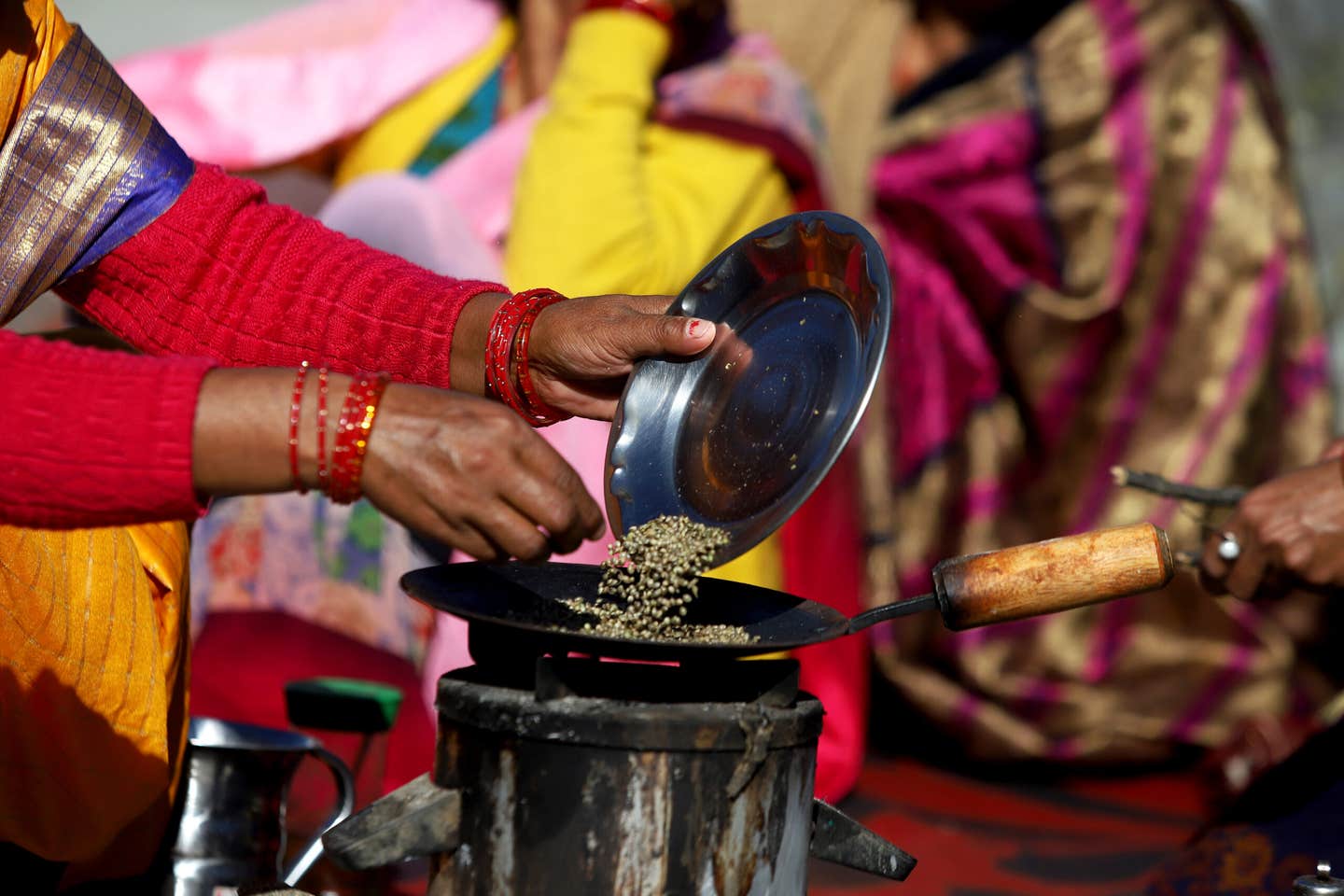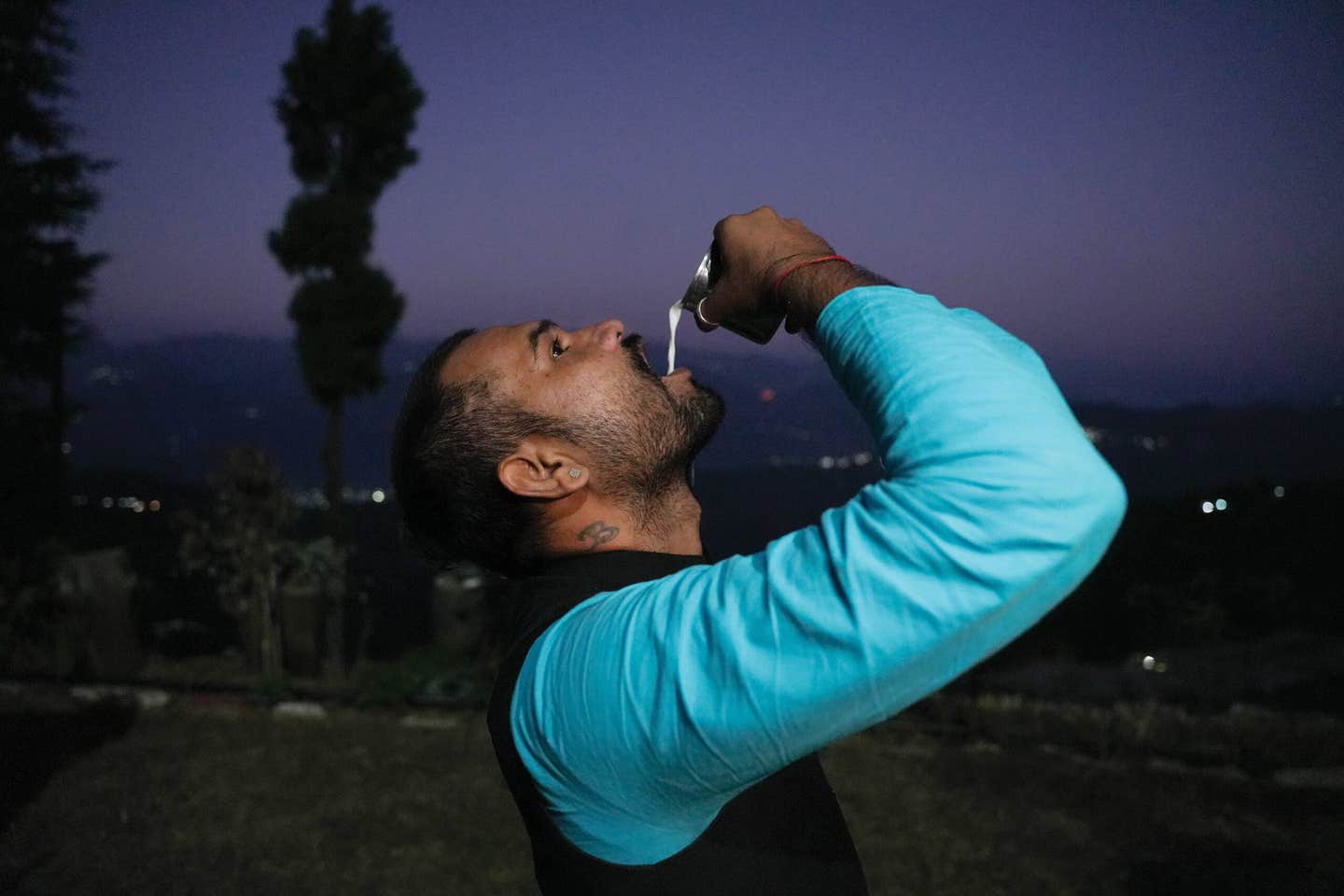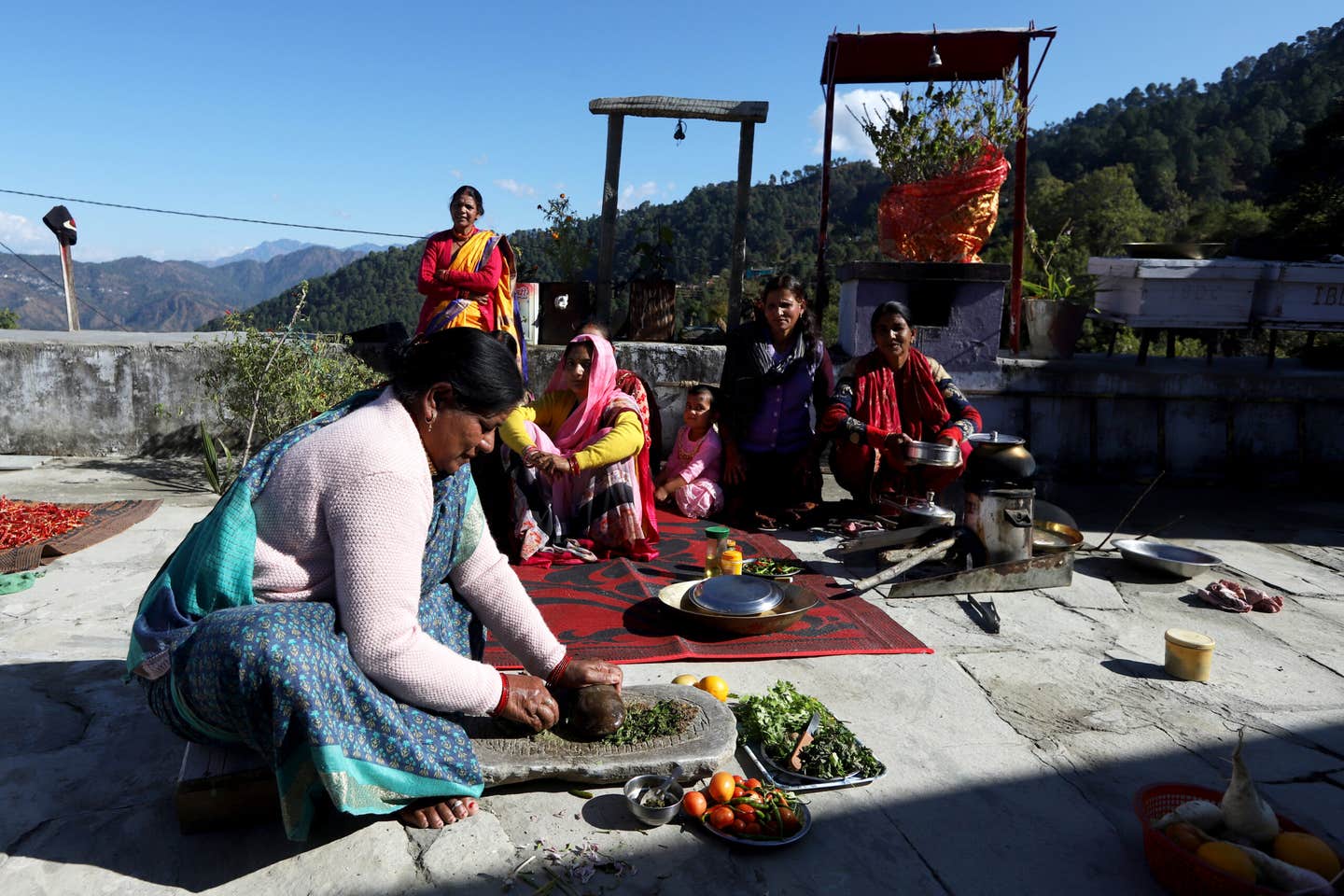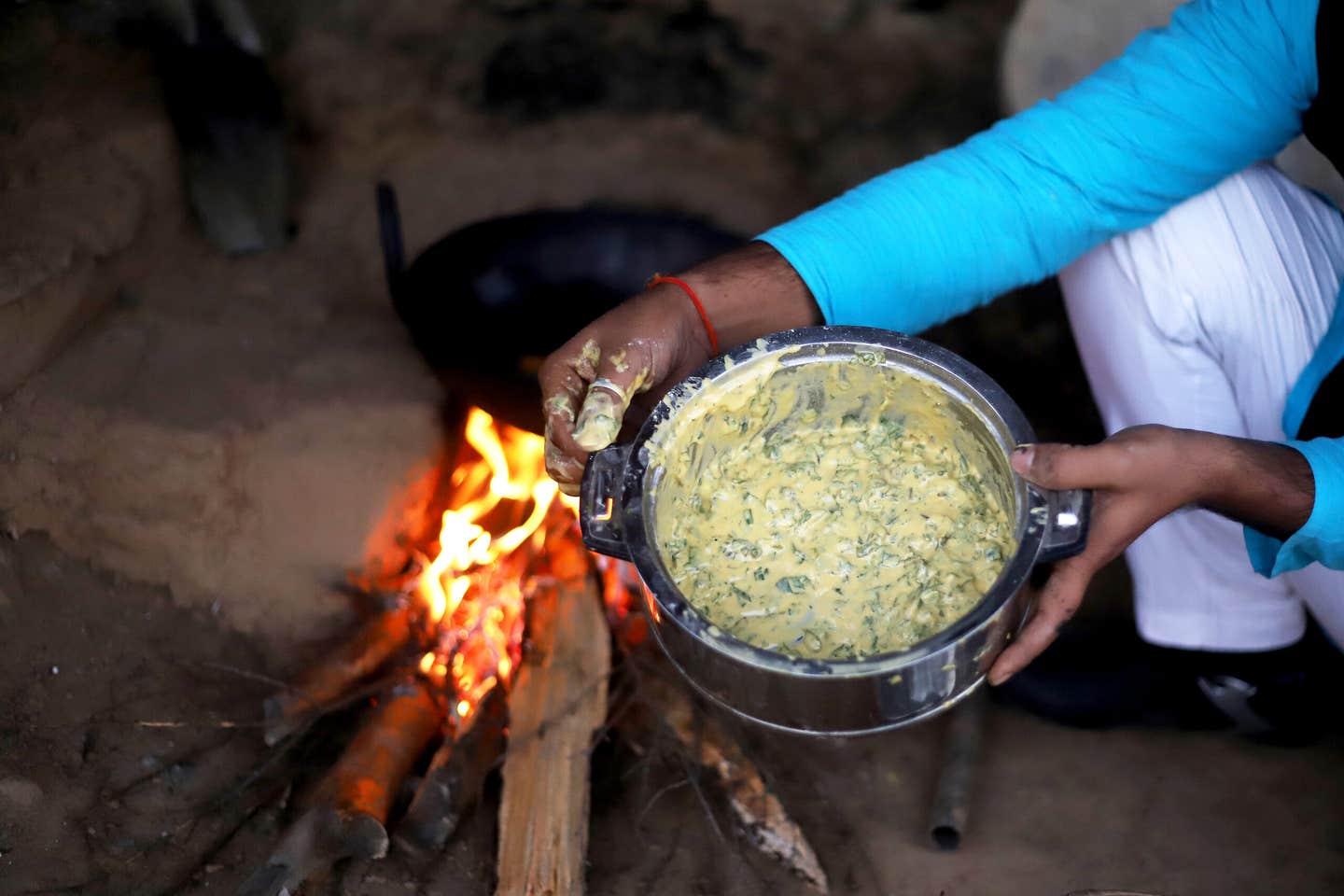
In Remote Northern India, Weed Isn’t a Trend—It’s a Way of Life
High in the mountains of Uttarakhand, cannabis has been a culinary fixture for centuries.
As the sun begins to set over the Himalayan peaks in the distance, Avinash Yadav sits cross-legged in a makeshift outdoor kitchen, crushing stark green leaves in his palm. He tosses them into chickpea flour, mashing the mixture with finely chopped onions, potatoes, and water to make a rich, almost golden batter. Nearby, villagers of Kyark start to slink to their homes. Some herd their livestock into pens to avoid prowling leopards, a common sight in Devbhoomi, the mountainous region in Northern India known as the Land of the Gods. When Yadav finishes preparing his batter, he’ll form it into small portions and gently drop them in hot oil shimmering over a mud stove. He’s making a fritter known as “bhang ke pakora,” with a key ingredient: cannabis.

Cannabis use has exploded into a multibillion-dollar industry as the drug is increasingly legalized—across the United States and the world. As its acceptance has grown, so have the forms for consuming it, from laced brownies and candy to teas and tinctures. Some high-end restaurants have begun offering multicourse meals with marijuana pairings. But in rugged Himalayan valleys, “bhang,” an edible paste derived from cannabis leaves, has been a fixture for centuries, with roots in Hindu scripture. Even though smoking marijuana is illegal in India, you can find bhang in snacks and soups, smoothies, and even wedding treats. “I didn’t make these bhang pakoras to get high,” said Yadav, a 33-year-old professional driver. “It’s a tribute to my Bholanath,” a reference to Shiva, a principal deity of Hinduism. The mythology of bhang varies. One widely cited legend depicts Shiva drinking poison so that others could obtain immortality. As the poison burns his throat, the god eats bhang to dull its effects. Other religious texts depict Shiva consuming bhang to master his senses for meditation.

Atharva Veda, a sacred Hindu scripture, classifies cannabis as one of the five most sacred plants on Earth. Now, it’s common to see the ingredient eaten throughout India during big religious and cultural festivals. Some still use it for meditation; others consume it for its cooling properties. In Northern India, bhang is churned into a wildly popular milkshake called thandai. Known for its mix of earthy and flowery notes and a creamy sweetness, it’s sometimes flavored with coconut and cardamom.

In Uttarakhand, the state where Avinash Yadav lives, cannabis is a staple. It grows wild in the region, popping up in backyards and on the outskirts of farm plots. In 2017, the state approved cultivation of the crop, mostly to produce hemp for textile making. One recent afternoon in Kyark, Pinky Devi prepared lunch, roasting cannabis seeds on a makeshift stove. She ground the roasted seeds with fresh mint, ginger, cilantro, green chiles, tomato, lemon juice, and salt. The result was a fibrous green and tangy dip, bhang ki chutney. “You just take one spoon of the chutney with the madua roti,” Devi explained, preparing a plate for her husband that included a millet flatbread.

Another popular dish in the region, jhol, is a buttermilk-based soup containing red chiles and cannabis without any of its intoxicating properties. Its mildly sour, lactic notes temper its spicy heat, and go well with steaming rice. “The illegal taboo around cannabis makes little sense, especially in a country where hundreds of millions know about its religious and medical significance,” says Abhishek Bahuguna, a priest in Uttarakhand.
The priest’s argument has weight. Bhang is a fairly common sight, even beyond the picturesque Himalayan valleys. Bhang-infused tea and cookies can be found in organic shops, including some that are licensed by the government. And not everyone avoids its intoxicating effects: During some festivals, people will make bhang samosas, often referring to the fried pastries as “buzzy” treats. But unlike the neighboring hill state of Himachal Pradesh, which has gained notoriety as a destination for getting high, Uttarakhand has shunned that kind of attraction. Instead, many residents have preserved bhang as a core part of their cuisine, all in the name of devotion. That is to say, the Land of the Gods has claimed a controversial plant and given it a divine place on the local platter.
Keep Reading
Continue to Next Story










